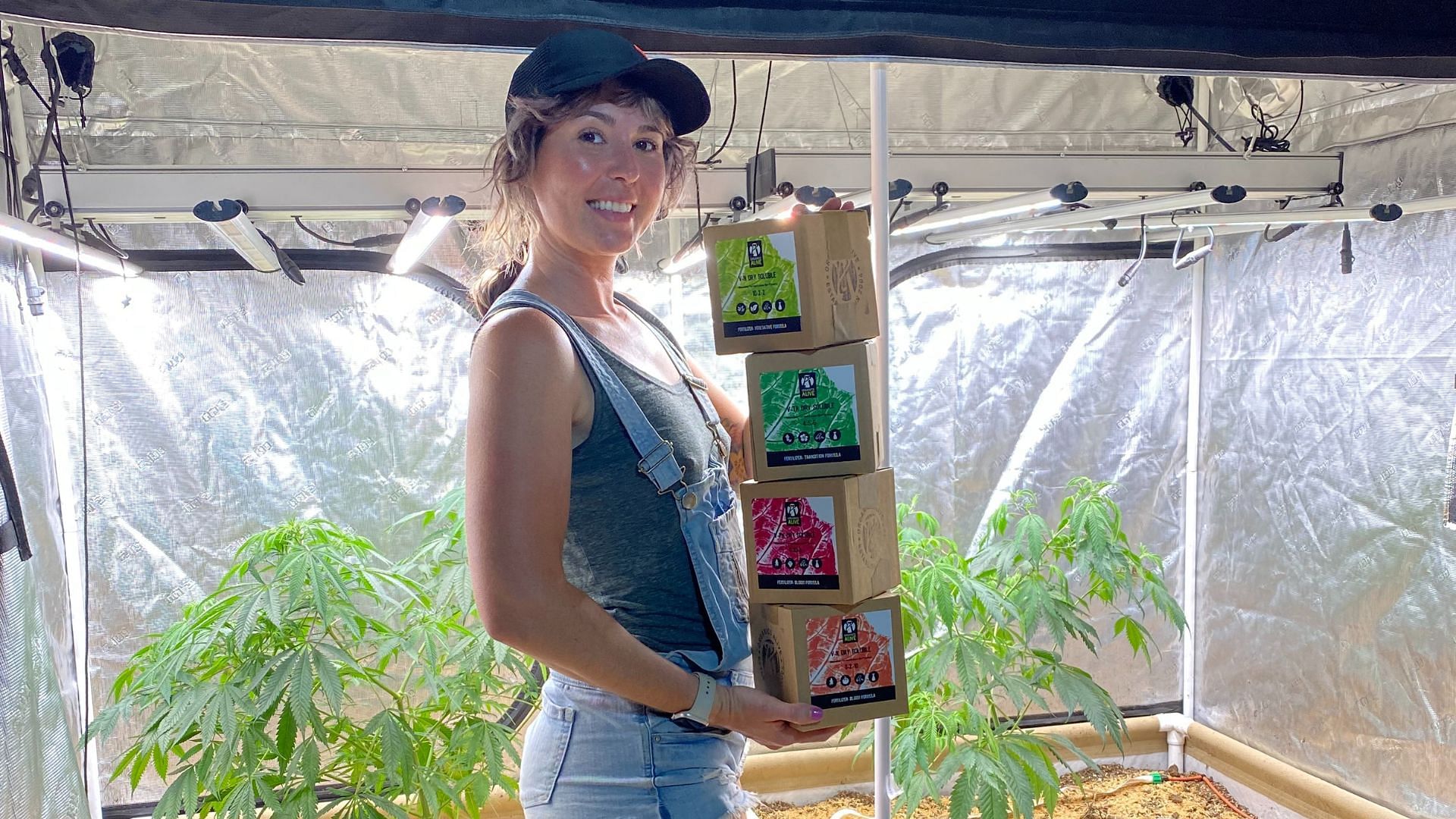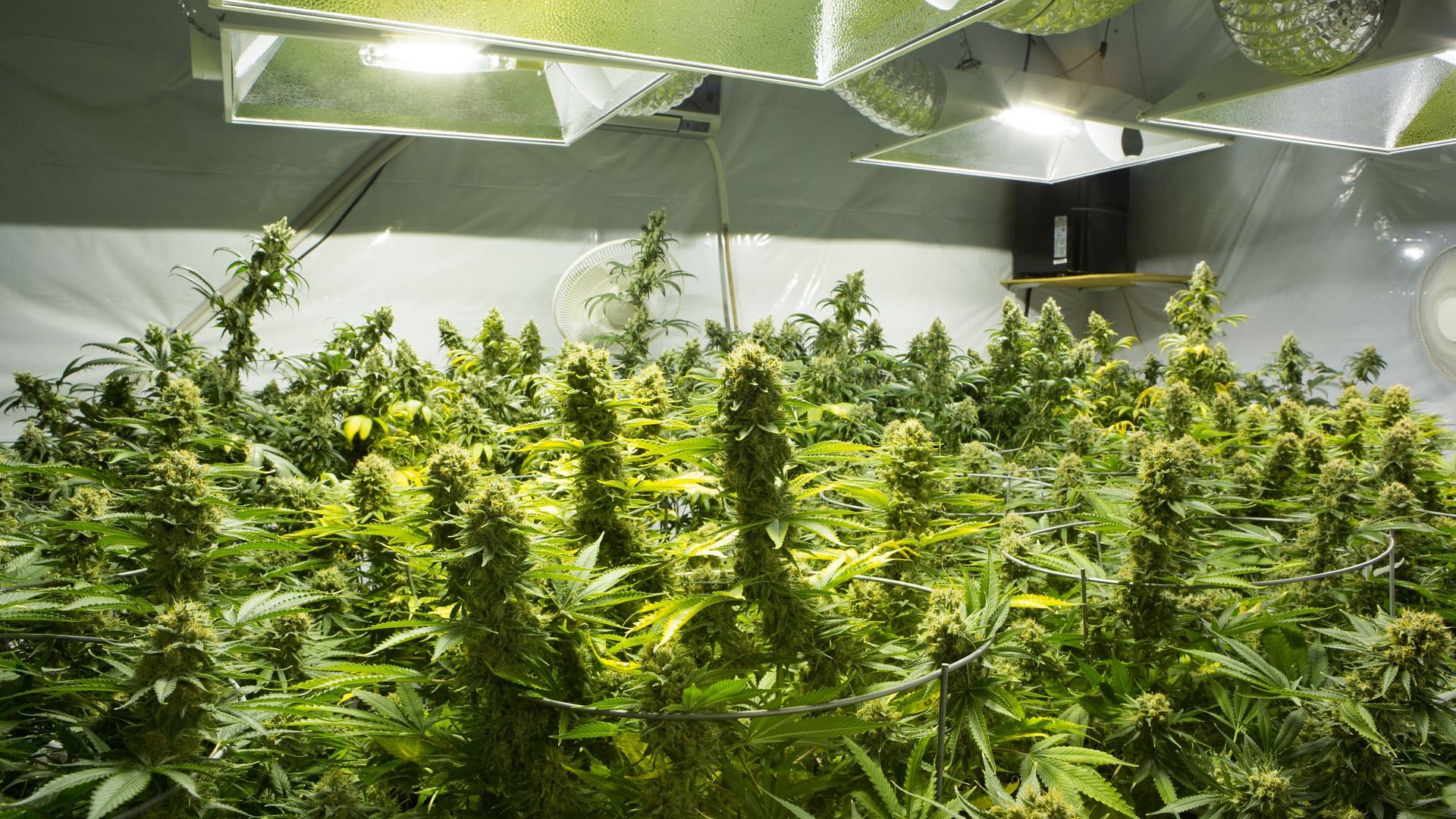
Starting An Indoor Grow Tent: Year-Round Gardening Made Easy
Share
Gardening is no longer confined to the whims of the seasons, thanks to the advent of indoor grow tents. Whether a novice gardener or an advanced cultivator, growing in an indoor tent offers the unique advantage of controlling your growing environment year-round. Here's a comprehensive guide to starting your indoor grow tent, covering everything from space selection to environmental controls and nutrient choices.
Choosing The Right Space For An Indoor Grow Tent
The first step in setting up your grow tent is choosing a suitable space. Ideally, this space should be easily accessible for watering and close to an electricity source. Remember, your grow tent will house various equipment like lights and fans, so having a power outlet nearby is crucial.
Setting up an indoor grow tent involves various equipment, each playing a vital role in the growth and health of your plants. Here, we'll delve into the most popular items, categorizing them as essential or optional, and discuss what makes them so.
Essential Equipment
Grow Tent
Grow tents are essential for indoor gardening, which significantly benefits creating an ideal growing environment. They effectively limit pest presence by serving as a physical barrier and controlled access point, reducing the risk of pest infestation. Additionally, grow tents facilitate the maintenance of a controlled environment, allowing gardeners to regulate temperature, humidity, and lighting to suit the specific needs of their plants. The reflective walls inside the tent enhance light efficiency, contributing to healthier plant growth.

Another crucial advantage of grow tents is their role in protecting your home from humidity and water damage. They contain the moisture plants generate, preventing them from affecting other parts of your home and reducing the risk of mould and mildew. The waterproof floor tray within the tent prevents water spillage, safeguarding your home's flooring and carpets from water damage. This containment also extends to soils and planting mediums, keeping your living space clean from gardening debris.
Lighting System
Choosing between high-intensity discharge (HID) and light-emitting diode (LED) lighting systems is crucial in indoor gardening. HID lights are known for their affordability and canopy penetration but are less energy-efficient and produce more heat, often necessitating additional cooling. Conversely, LED lights are more energy-efficient, have a longer lifespan, and generate less heat. While LEDs are initially costlier than HIDs, they offer long-term energy bills and cooling savings.

LEDs hold a distinct advantage in light quality and spectrum. They provide a complete, customizable spectrum, including options like UV-B, and can even mimic natural light changes like sunrise and sunset, enhancing plant growth. Although HID lights are adequate for growth, they lack this customization and spectrum variability.
Choosing HID and LED ultimately depends on budget, energy efficiency, and specific plant needs. While HIDs are still used, LEDs are increasingly popular for their energy efficiency and customizable light spectrums.
Ventilation System
Ventilation systems play a crucial role in indoor gardening, especially in managing air exchange, vital for controlling humidity, mitigating mold issues, and regulating temperature. Proper ventilation ensures a consistent supply of fresh air, which is crucial for maintaining optimal growing conditions and preventing the buildup of excess moisture that can lead to mold growth.
By incorporating a fresh air intake and filter, gardeners can draw in cooler air from outside, particularly useful during winter or evenings, to naturally cool the growing space without using an air conditioner. Conversely, exhaust systems and fans are essential to a successful indoor garden ventilation setup. The exhaust system works to expel hot and humid air inside the grow tent, helping regulate the internal temperature and humidity levels.

This is crucial for preventing overheating and excessive moisture, which can lead to plant stress and disease. On the other hand, fans help circulate air within the grow space, ensuring even temperature distribution and preventing microclimate formation. Together, these systems create a dynamic airflow that supports healthy plant growth and maintains the overall environmental balance within the growing area.
Climate Control: Humidifiers And Dehumidifiers
Humidifiers and dehumidifiers are integral to managing the atmospheric conditions within an indoor grow area, each serving a unique purpose at different stages of plant growth.
Humidifiers add moisture to the air, which is particularly beneficial during the seedling and vegetative stages of growth, where higher humidity levels are required for optimal plant development. These devices help maintain a moist environment that encourages healthy leaf and stem growth.
On the flip side, dehumidifiers play a critical role during the flowering and late vegetative stages. Lower humidity levels are necessary to prevent mould and mildew formation as plants mature, especially in dense foliage or when flowers develop. By extracting excess moisture from the air, dehumidifiers ensure a drier environment conducive to the healthy maturation of plants.
Together, humidifiers and dehumidifiers allow growers to control the humidity levels in their grow space precisely, adapting to plants' changing needs as they progress through their growth cycles.
After mastering the basics of humidity control with humidifiers and dehumidifiers, advanced growers often turn their attention to Vapor Pressure Deficit (VPD). VPD helps optimize plant growth by balancing humidity and temperature, which is crucial for different stages of a plant's lifecycle.
Understanding and managing VPD, which involves adjusting environmental conditions to the ideal humidity and temperature levels for each growth stage, can significantly improve plant health and yield. As you progress in your indoor gardening journey, incorporating VPD into your climate management strategy becomes essential to achieving optimal growing conditions.

Temperature Control
Temperature control significantly impacts plant health and the quality of the final product. The ideal temperature range varies slightly depending on the growth stage. Generally, during the vegetative stage, a warmer climate of about 70°F to 85°F (21°C to 29°C) is preferred. This range promotes vigorous leaf and stem growth, setting a solid foundation for later stages.
As the plants enter the flowering stage, cooler temperatures ranging from 65 to 80°F (18°C to 26°C) are ideal. This slight drop in temperature encourages the development of potent, aromatic buds. Additionally, cooler nighttime temperatures in the later flowering stage can help bring out vibrant colours in certain cannabis strains, adding to the visual appeal of the buds.
Diurnal temperature variation, the difference between day and night temperatures, is also crucial in cannabis cultivation. Mimicking these natural temperature fluctuations can stimulate flowering and overall plant health.
Managing temperature in a cannabis grow space often involves sophisticated equipment like air conditioners, heaters, and automated climate control systems. These tools help maintain a consistent and optimal temperature, ensuring the plants are not subjected to stress from temperature fluctuations.

Plant Support Structures
Plant support structures are a vital aspect of indoor gardening, especially for particular plants like cannabis, which can grow quite large and heavy. As cannabis plants enter the flowering stage, their branches become laden with dense, resinous buds, which can cause the branches to sag or even break.
Using support structures, such as trellises, stakes, or cages, helps provide the necessary support to keep the plants upright and well-spaced. This support prevents physical damage to the plants and ensures optimal air circulation around the foliage and buds, reducing the risk of mold and mildew formation.

Moreover, support structures can train plants into desired shapes and sizes, maximizing space efficiency and light exposure, which is significant in limited-grow space environments. By evenly distributing the plant's canopy, these supports enhance light penetration and encourage a more uniform and productive growth.
Optional Equipment
Carbon Filter
A carbon filter is essential for odour management, especially when growing aromatic plants. It also helps in maintaining air quality.
CO2 Enrichment Systems
While not essential, CO2 systems can significantly boost plant growth. DIY options like mushroom grow bags, or more sophisticated CO2 generators can be used based on your budget and expertise.
Hydroponic Systems
For those preferring soilless cultivation, hydroponic systems are a great optional addition. They allow precise nutrient and water control but require more technical know-how.
Grow Monitoring Systems
Advanced systems to monitor pH, moisture levels, and nutrient concentrations can optimize growth but are optional for beginners.
Automated Timers
Automated timers are handy for controlling lights and irrigation systems. They ensure consistency but are optional if you can manually manage these aspects.
Microscopes And Magnifiers
These tools are helpful but optional for enthusiast’s keen on closely monitoring plant health and identifying pests or diseases.
Irrigation Systems
Irrigation systems, while optional in indoor gardening, offer various forms to suit different needs, ranging from basic drip systems for consistent moisture delivery to advanced hydroponic setups that allow for precise nutrient and water control, catering to the specific requirements of diverse plant types.
How To Choose What Containers To Grow In When Starting An Indoor Grow Tent
Choosing the right type of container for your indoor garden is a decision that's significantly influenced by your overall growing style, which dictates the kind of equipment you'll use for optimal results.
There are various growing methods, such as hydroponics or soil-based, and each method has unique requirements and benefits. Sticking to one style and using equipment that complements it is vital to achieving the best outcomes.
For instance, if you choose hydroponics, you will opt for net pots or grow bags suitable for water-based nutrient solutions. In contrast, a soil-based approach would require traditional pots or fabric containers that support soil aeration and drainage.

The choice of containers directly affects root health and plant growth. Your fertilization strategy is also closely linked to your growing method. Hydroponic systems often require water-soluble fertilizers, while organic or soil-based setups might benefit more from slow-release or organic nutrient forms. The synergy between your chosen containers, growing style, and fertilization approach is crucial for creating an environment that supports healthy, vigorous plant growth.
Organic Fertilizers: A Universal Choice For Any Growing Style
Regardless of your chosen growing method, opting for organic fertilizers is a decision that can significantly benefit your plants. Organic fertilizers are derived from natural sources and are known for their ability to improve soil health and structure, thereby fostering a more sustainable and environmentally friendly gardening approach.
One of the key advantages of using organic fertilizers is their contribution to the microbial life in the soil or growing medium. These beneficial microorganisms are critical in breaking down nutrients, making them more accessible to plants. This process nourishes your plants and builds a healthier, more resilient soil ecosystem over time.

Organics Alive is a prime example of a versatile, water-soluble powder that can adapt to various growing styles. For hydroponic systems, it serves as an effective standalone nutrient solution, delivering all essential nutrients in a form that plants easily absorb. In soil containers or living soil beds, it works with natural processes, enhancing nutrient availability and promoting vigorous plant growth.
Living soil setups exemplify the synergy between organic fertilizers and microbial activity. In these systems, the microbial digestion of organic matter releases nutrients in a form that plants can readily use. This nutrient delivery method mimics natural soil ecosystems and is highly effective in supporting plant health. However, it's important to note that living soil systems typically require more volume, with more extensive beds, like these Grassroot Living Soil Beds, being preferable to ensure adequate habitat for the microbial communities and sufficient nutrient cycling.
Regardless of whether you are growing in a hydroponic or soil-based, choosing organic fertilizers can enhance plant growth, improve the health of your growing medium, and contribute to a more sustainable gardening practice. Using organic fertilizers aligns with a holistic approach to gardening, where nurturing the entire ecosystem, including the microbial life, leads to healthier plants and yields.

